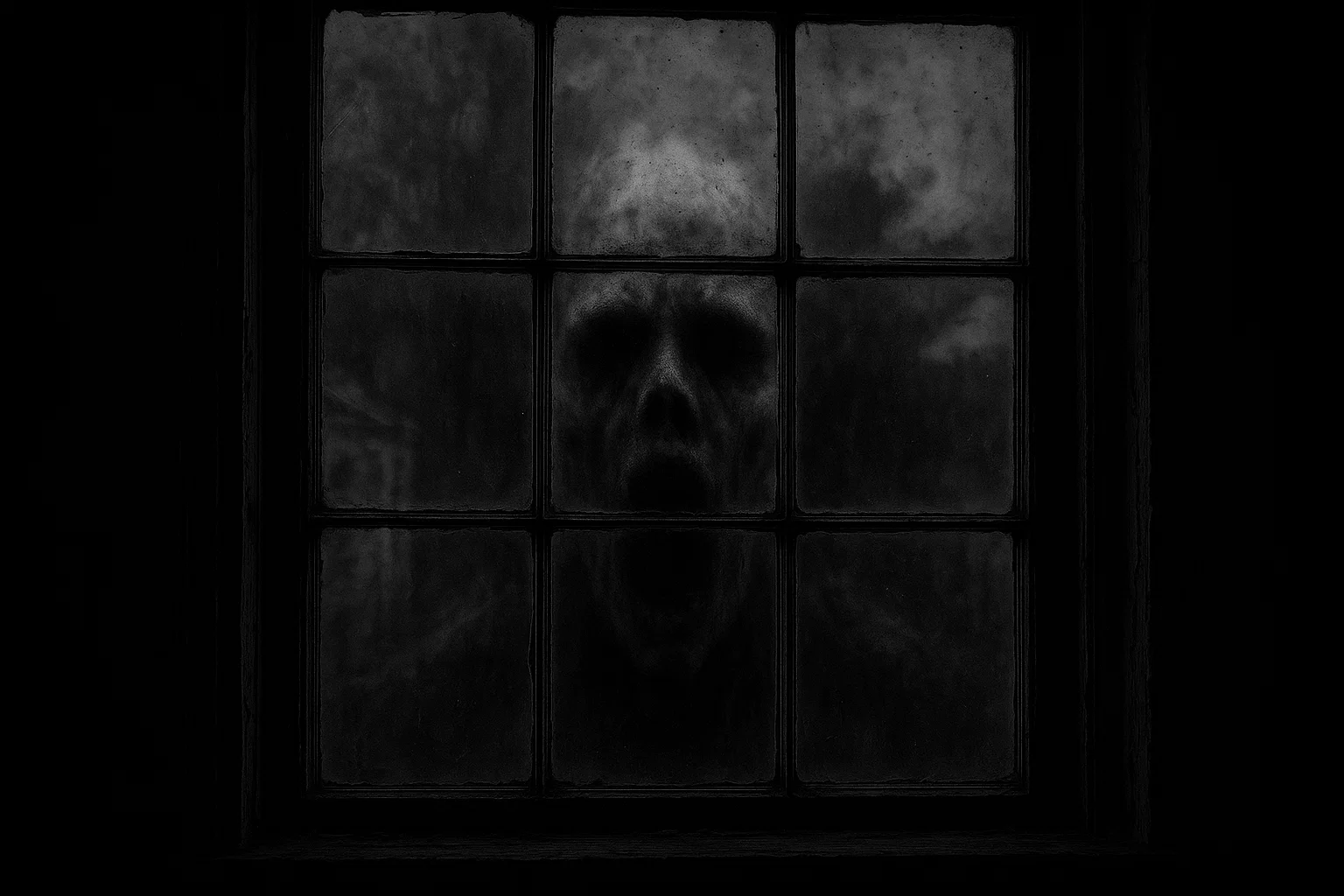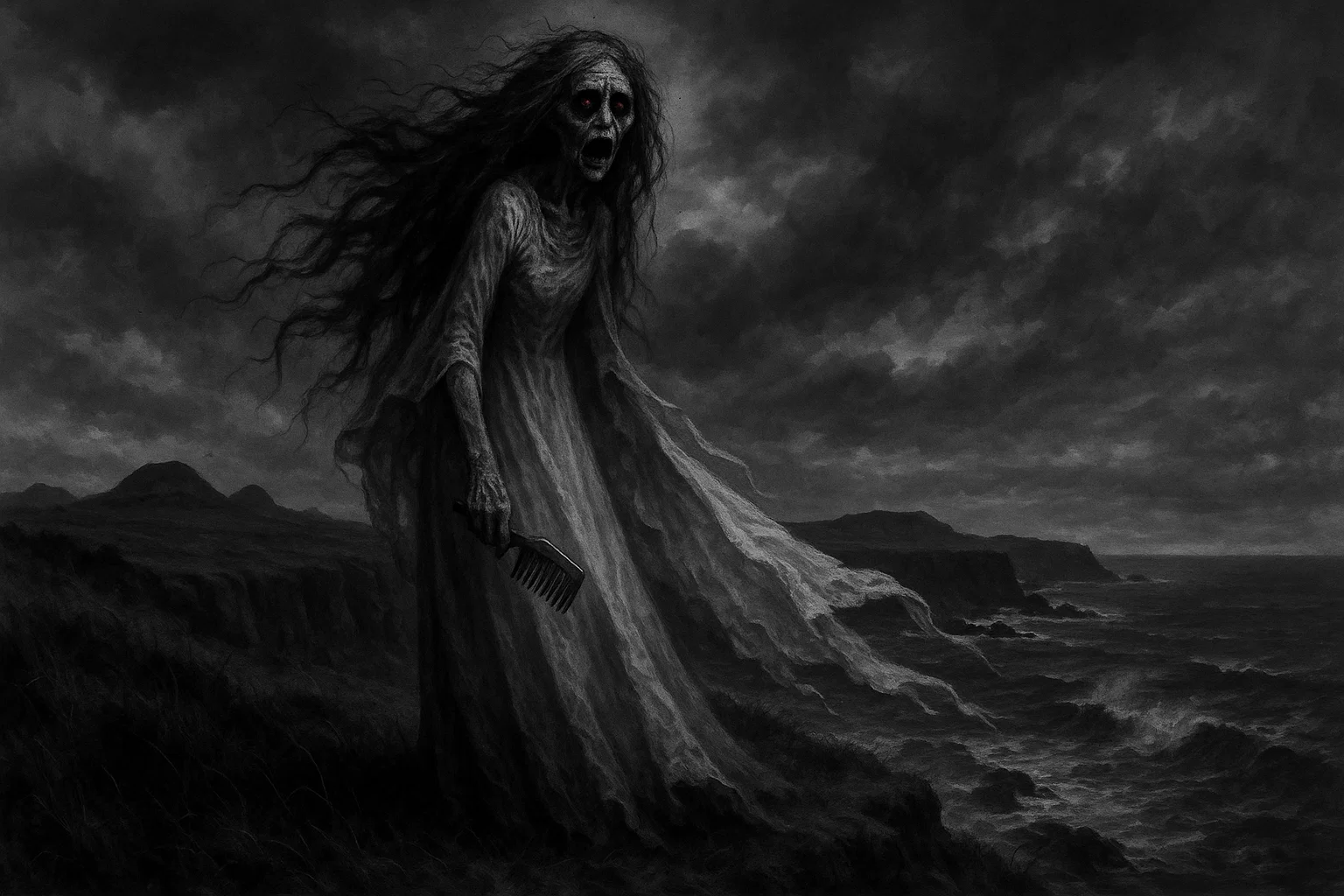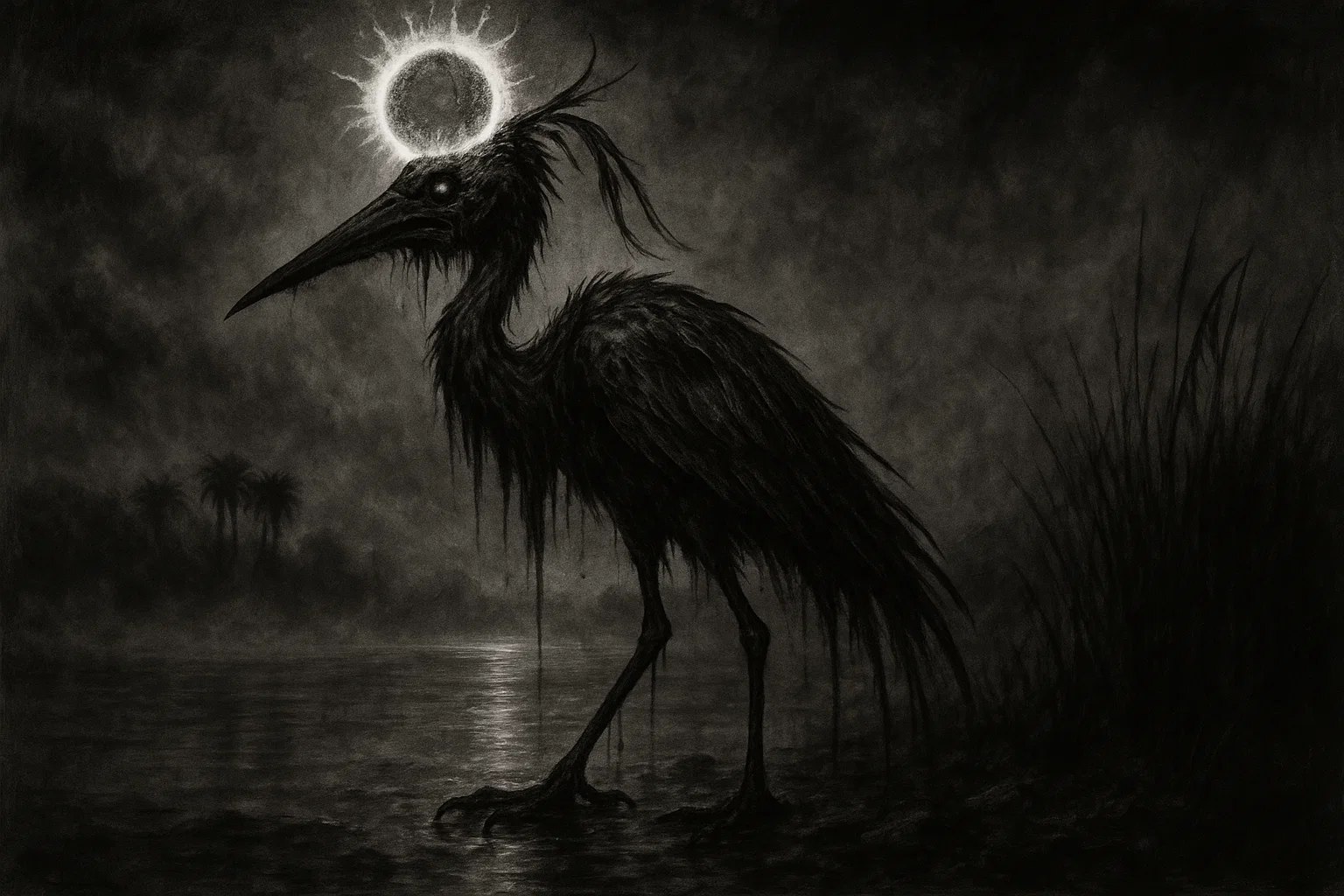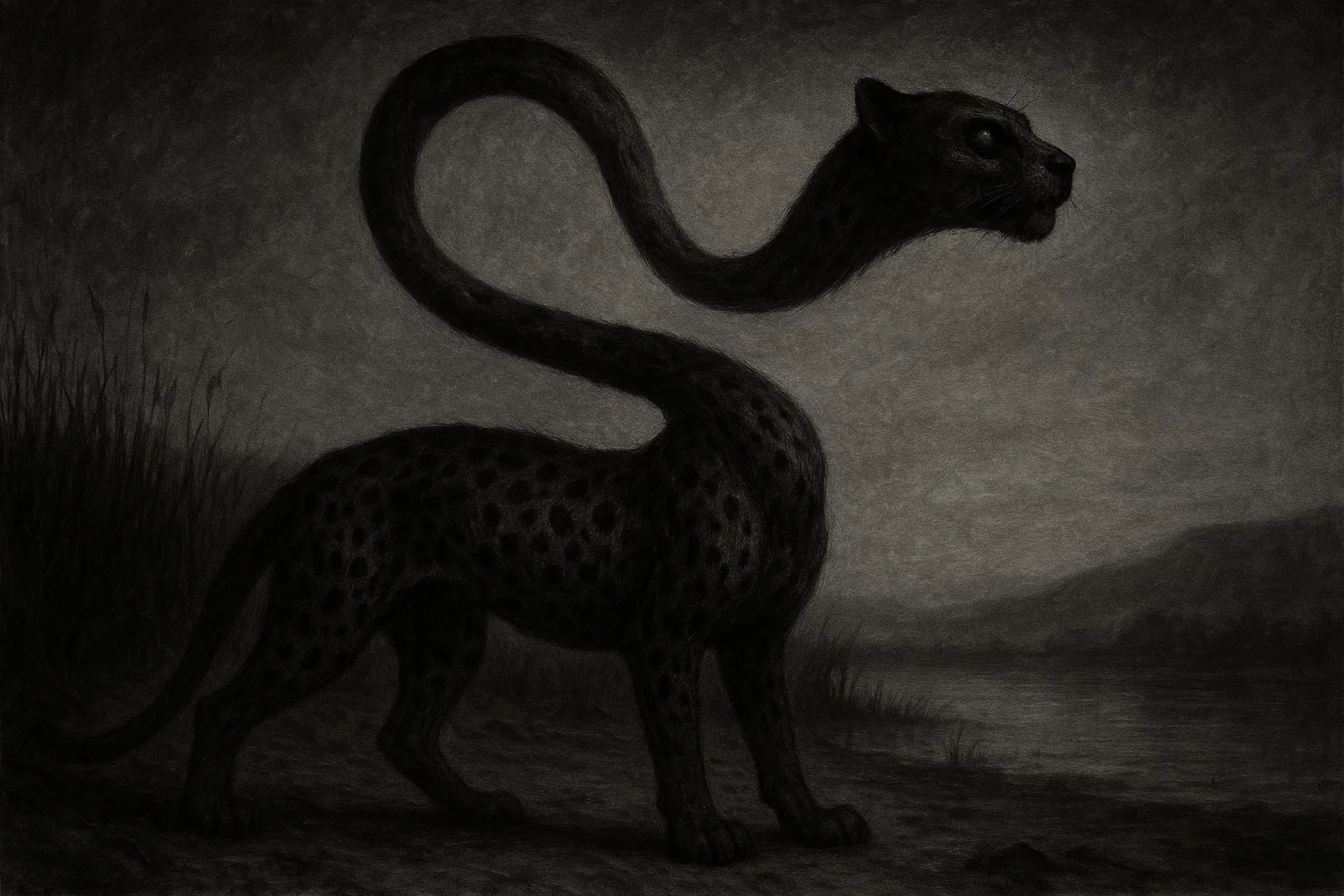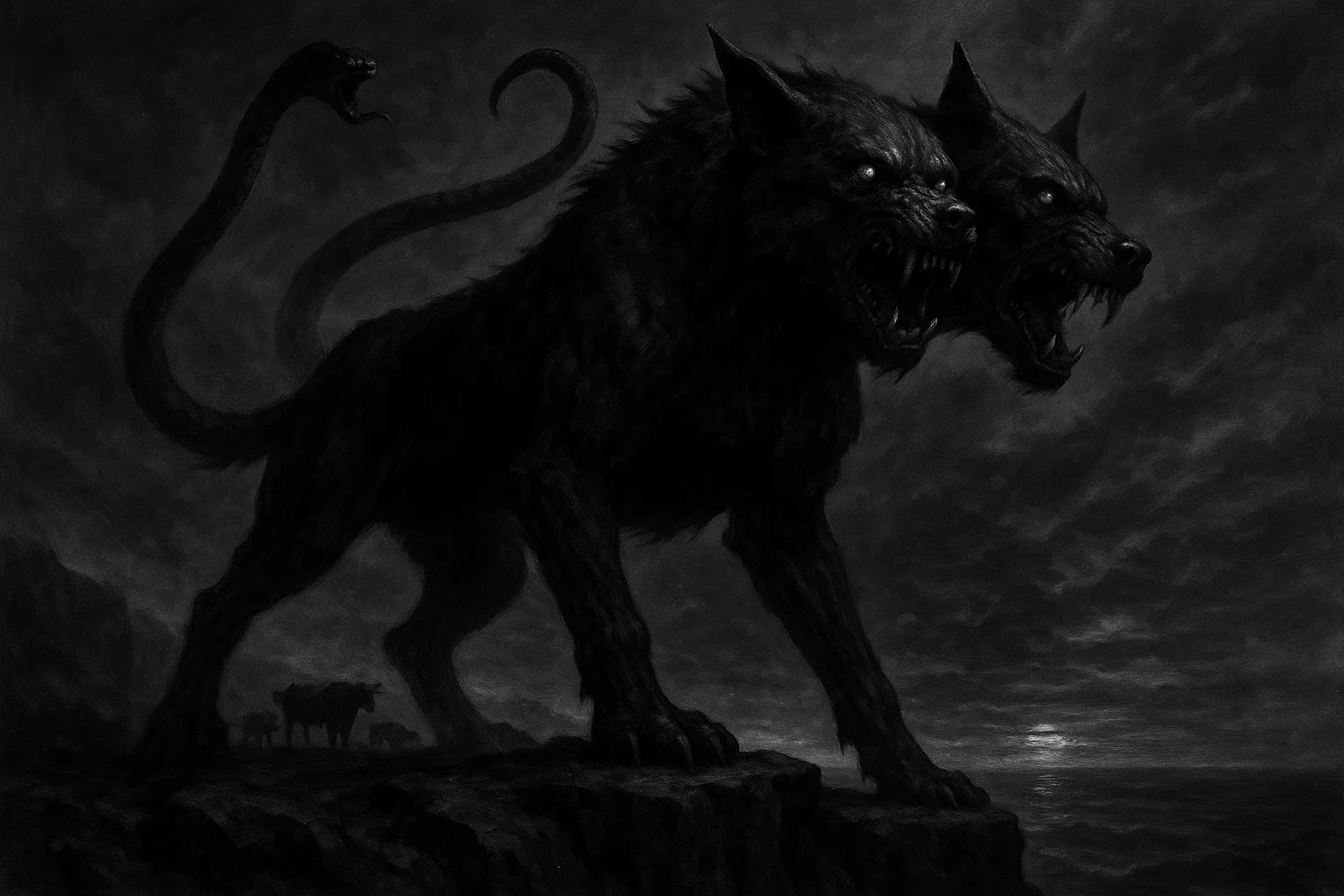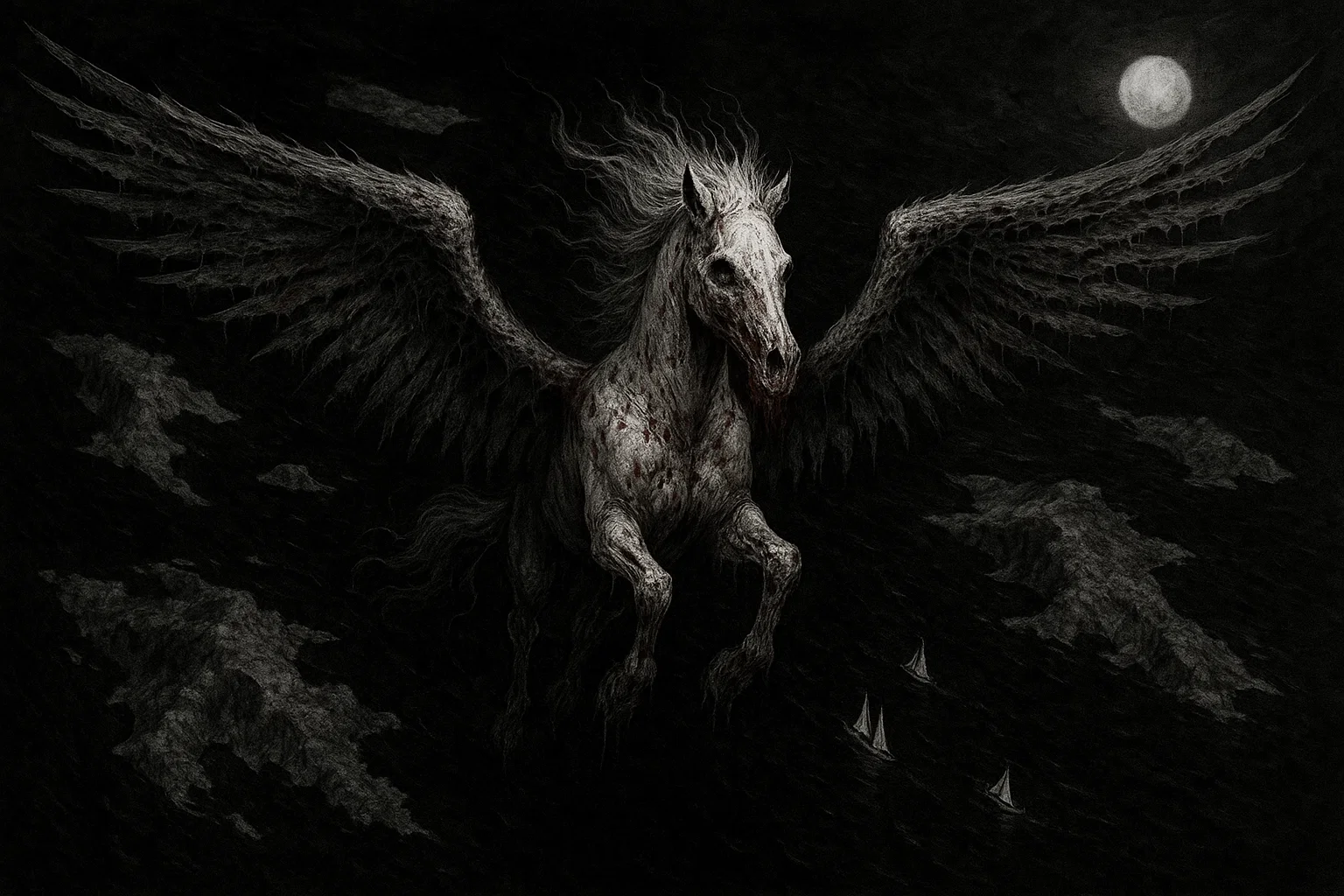Ever looked into a window and felt a ghostly stare? The Pickens County Courthouse haunting in Carrollton, Alabama, is famous for the eerie face of Henry Wells, a freedman blamed for arson in 1876. This haunted courthouse in Alabama’s Black Belt draws ghost hunters with its chilling tale of vengeance and tragedy.
Why does Wells’ ghostly face linger in the garret window? What fuels this supernatural legend? Dive into one of Alabama’s ghost stories and uncover the mystery of the Henry Wells ghost.
Summary
Overview
The Pickens County Courthouse haunting in Carrollton, Alabama, is all about Henry Wells, a freedman accused of torching the county’s second courthouse on November 16, 1876.
Built from 1877 to 1878, the third courthouse at 20 Phoenix Avenue is a Greek Revival gem, but its north-facing garret window shows Wells’ ghostly face in the lower-right pane.
Visitors report seeing the spectral image, hearing whispers, footsteps, or screams, and feeling cold chills.
Here’s what you need to know about this haunted courthouse:
- Location: Pickens County Courthouse, 20 Phoenix Avenue, Carrollton, Pickens County, Alabama.
- Ghost: Henry Wells, born around 1840, died January 30, 1878, likely shot or lynched.
- Activity Types: A ghostly face in the window, spooky sounds like whispers and footsteps, and creepy feelings like cold spots.
- Historical Context: Set in the Reconstruction era (1865–1877), a time of racial violence and turmoil in Black Belt Alabama.
- Cultural Significance: Made famous by Kathryn Tucker Windham’s 13 Alabama Ghosts and Jeffrey (1969), it’s a top spot for paranormal activity fans, with binoculars for viewing.
- Controversy: The window wasn’t installed until February 1878, after Wells’ death, so some say lightning or glass flaws explain the face, not a lynching curse.
- Modern Relevance: The face is still there in 2024, with spooky reports from visitors and playgoers, making this Alabama ghost story a must-see.
Historical Background of Pickens County Courthouse
The Setting: Carrollton, Alabama
The Pickens County Courthouse sits at 20 Phoenix Avenue in Carrollton, Alabama, a small town in Pickens County. Built from August 1877 to March 1878, this Greek Revival building is the county’s third courthouse.
Carrollton, with about 1,054 people in 1870, is 30 miles southeast of Columbus, Mississippi, and 40 miles north of Eutaw. Named for Charles Carroll, a signer of the Declaration of Independence, the town started in 1831 on 80 acres of federal land.
You May Also Like: The White Lady of Hohenzollern: A Harbinger of Death and Disaster?
Pickens County, formed on December 20, 1820, and named for General Andrew Pickens, covers 885 square miles of hills and plains. In 1870, it had 21,896 residents, including 12,477 Black folks, many freed after the Civil War.
The courthouse, with white columns and red brick, cost $12,000 and was designed by D.R. McMillin and J.C. McKee. Its garret, a tiny attic, holds the famous window. Today, it’s a working courthouse and a hotspot for haunted history lovers.
Historical and Cultural Context
The Pickens County Courthouse haunting grew out of the Reconstruction era, a rough time after the Civil War. The first courthouse, a log building from 1830, burned on April 5, 1865, when Union General John T. Croxton’s troops raided Carrollton.
The fire wiped out records, hitting the town hard. The second courthouse, built in 1866 for $18,000, was a brick structure that stood for hope. But on November 16, 1876, it burned down, likely arson. Kerosene cans and scorched papers suggested someone wanted records gone, costing the county $20,000 in deeds and court files.
Pickens County was a tough place in the 1870s. White Democrats took back power in 1874, using groups like the Red Shirts to scare Black voters.
The county saw 15 lynchings from 1877 to 1900, one of Alabama’s worst records. Victims like Nathaniel Pierce (hanged April 15, 1877, for theft) and Joe Floyd (shot October 3, 1877, for voting Republican) show the racial hate. Henry Wells, a freedman, got caught in this mess.
The Trail of Tears (1830–1838) also hurt the area, forcing out Cherokee and Creek tribes. Cholera in 1850 killed many settlers, leaving unmarked graves.
These tragedies—war, violence, and disease—set the stage for the haunted courthouse. Kathryn Tucker Windham’s 13 Alabama Ghosts and Jeffrey made the Henry Wells ghost a star, tying it to Alabama’s love for spooky tales.
The Ghost of Henry Wells
Identity and Legend
The Pickens County Courthouse haunting is all about Henry Wells, a freedman born around 1840 in Pickens County’s Providence Beat, 5 miles west of Carrollton. Likely born to enslaved parents, Wells was raised by his grandmother Clara, according to local stories.
By 1870, he lived near Palmetto, Alabama, with his wife Liza Wells and kids Emma (age 6) and John (age 3), working as a laborer. Folks said he was tall, strong, and carried a straight razor, with a habit for gambling and small-time trouble, though no arrests were recorded before 1876.
On November 16, 1876, the second courthouse burned. The West Alabamian newspaper (November 22, 1876) found kerosene cans and a trail of oil, pointing to arson. Wells and Bill Burkhalter, a white worker, were blamed, maybe to hide debts or charges.
Court records from December 1876 show Wells was indicted for “malicious burning,” but proof was weak—just talk of him near the courthouse with kerosene. He ran, hiding in Pickens County’s woods for two years. On January 29, 1878, Sheriff John W. Johnston caught him in Fairfield, 30 miles south of Aliceville, after a tip.
You May Also Like: Who Is Andras, the Demon Who Sows Discord and Death?
On January 30, 1878, Wells was locked in the garret of the new courthouse, still being built. A mob of 50–100 men, led by planter James L. Davidson, gathered, wanting blood.
Stories say Wells looked out the north-facing garret window and yelled, “I’m innocent! Kill me, and my face will haunt you!” A big storm hit, and lightning struck an oak tree nearby. Some say it burned Wells’ scared face into the window’s lower-right pane.
But records tell a different tale: the West Alabamian (February 6, 1878) says Wells was shot by deputies while trying to escape, dying near the courthouse square.
The county paid $7 for his coffin and buried him unmarked at Carrollton Cemetery. Others swear he was lynched, hanged from a locust tree on Phoenix Avenue.
The face showed up by February 1878, shocking builder J.C. McKee, who said the windows went in after January 30, per build logs. Soap, lye, and sand couldn’t scrub it off. The face stayed through a 1927 hailstorm that broke other windows.
Kathryn Tucker Windham’s book spread the Henry Wells ghost story, calling it a lynching curse for justice. Wells’ love for his family and fear of the mob make him real, but the window’s late installation raises questions about this Alabama ghost story.
Local Legends and Variations
The Pickens County Courthouse haunting has grown with spooky tales in Carrollton.
Here are the main stories about the Henry Wells ghost:
The Lightning Portrait: Folks say lightning hit an oak on January 30, 1878, as Wells stared out, burning his face into the glass. The West Alabamian (February 13, 1878) mentions a storm but no courthouse strike. The face, with a beard and wide eyes, won’t wash off, even after new glass in 1928 and 1955.
The Lynching Vow: Some believe Wells was lynched, cursing the mob with, “I’ll haunt you!” His face, made by ghostly anger, stands for justice. This fits Pickens County’s lynching past but not the gunfire report.
The Second Face Mystery: A 1928 Birmingham News story claimed another face, linked to Sam Burhalter, accused of killing Deputy Thomas Johnson in 1879. Burhalter died in 1936, so it’s not his ghost, but it hints at more paranormal activity.
The Phantom Clock Chimes: The 1878 clock chimes at 3:17 a.m., Wells’ death time. People like Edna Mae Turner (1990) heard it tick backward, tying it to the 1876 fire or Wells’ spirit.
The Lady in White: A sad woman in a white gown roams the courtroom and basement. She might be Mary Eliza Johnston, the sheriff’s sister, killed in 1877, mourning Wells or her death.
You May Also Like: Wolf Woman of Mobile. Is the Alabama’s Werewolf Real?
The Kerosene Conspiracy: This says Wells burned the courthouse to hide a theft charge, with kerosene cans found by Constable Robert Perry. His guilty ghost stays, with a kerosene smell noted in 2005.
The Cursed Garret: Since the 1900s, the garret’s called cursed. In 1885, painter Thomas Hale ran when his brush caught fire, hearing Wells say, “Leave my face!” Workers avoid it.
The Sheriff’s Encounter: In 1880, Sheriff William G. Robertson heard Wells yell, “It’s me!” while cleaning the window, per Clerk James T. Poe’s log. It scared him off.
These tales show Carrollton’s mix of guilt, fear, and haunted history, with the Henry Wells ghost at the heart.
Sightings and Testimonies of the Pickens County Courthouse Haunting
The Pickens County Courthouse haunting has spooked Carrollton since 1878. The Henry Wells ghost—his face in the garret window—draws locals, tourists, and ghost hunters.
From creepy whispers to cold chills, people share stories of paranormal activity. Here are the most chilling sightings, with details on when, where, and what happened.
1878 Sheriff’s Encounter
On February 2, 1878, Sheriff William G. Robertson climbed to the garret to clean the new window. He saw a bearded man’s face—eyes wide, mouth open. As he scrubbed, a voice screamed, “It’s me!”
Robertson dropped his rag and ran, telling Clerk James T. Poe the Henry Wells ghost was real. The West Alabamian (February 13, 1878) noted his fear, saying the face stayed clear. This first sighting kicked off the haunted courthouse legend, making folks believe Wells’ curse was true.
1928 Hailstorm Confirmation
On January 10, 1928, a hailstorm smashed windows across Carrollton, but the garret’s face stayed perfect. Carpenter J.E. Oglesby fixed the broken panes and checked the face.
He said it looked “clear as day,” like it was just made, per the Pickens County Herald (January 18, 1928). Oglesby felt a chill and heard a low hum, swearing the eyes followed him. This event proved the face’s spooky strength, boosting the Alabama ghost story.
You May Also Like: She Crawls at Midnight: The Teke Teke Legend
1969 Vandalism Surge
In June 1969, teens flocked to the courthouse, spurred by Kathryn Tucker Windham’s book. Clara Thompson, a 16-year-old local, saw the face while sneaking in at midnight.
She heard footsteps in the attic and felt a cold breeze, saying, “His face looked mad; steps chased us out.” The Pickens County Herald (June 25, 1969) reported broken bottles and graffiti, blaming thrill-seekers.
The surge showed how the Henry Wells ghost gripped young folks, spreading the haunted courthouse tale.
2005 Kerosene Scent Sighting
On November 5, 2005, Sarah Peterson, a tourist from Mobile, visited at dusk. She saw the face shift—its mouth seemed to frown. A strong kerosene smell hit her, and she felt heavy, like someone pushed her.
“The face moved; kerosene was everywhere, and I couldn’t breathe right,” she told the Carrollton Gazette. The smell tied to the 1876 fire, making her sighting a creepy link to Wells’ alleged arson.
2019 Play Performance Disturbances
On October 31, 2019, the Face in the Window play packed the courtroom. Laura Keller, a Birmingham teacher, felt freezing spots during the show. Screams—not in the script—came from the attic, and lights flickered. “It got ice-cold; screams weren’t actors,” she said.
The Pickens County Herald (November 6, 2019) noted cast members saw a shadow by the judge’s bench. This modern sighting tied the paranormal activity to the Henry Wells ghost during a big event.
Other Notable Sightings
More creepy encounters keep the Pickens County Courthouse haunting alive. Here’s a table of other key sightings:
| Date | Witness | Location | Description | Quote/Excerpt |
|---|---|---|---|---|
| July 4, 1985 | Mary T., Tourist | Courthouse Square | Saw face, heard whispers, felt chill, smelled kerosene. | “His eyes stared; whispers and kerosene scared me.” |
| October 20, 1990 | Edna Mae Turner, Clerk | Courtroom | Heard clock chime at 3:17 a.m., saw shadow in hall. | “Clock hit 3:17; a shadow moved—no one there.” |
| June 10, 2015 | E.T. Wambles, Photographer | Courthouse Square | Snapped shifting face, heard hum. | “It moved in my lens; a hum came from nowhere.” |
| October 15, 2022 | Karl Stern, Historian | Garret Window | Saw face under moonlight, felt heavy air. | “His face glowed; the air felt wrong.” |
| March 3, 2024 | Craig Patterson, Mayor | Attic | Heard footsteps, saw face at dusk. | “Steps above, and his face was sharp.” |
| April 10, 2024 | Lisa R., Tourist | Courthouse Square | Saw Lady in White, heard sobs in basement. | “A woman in white cried below; it broke my heart.” |
Theories Explaining the Pickens County Courthouse Haunting
The Pickens County Courthouse haunting puzzles everyone. Is the Henry Wells ghost real, or is it just a trick?
Paranormal Theories
Vengeful Spirit: Wells’ last words—“I’ll haunt you!”—might’ve trapped his spirit in the courthouse. Whether shot or lynched on January 30, 1878, he was wronged, blamed with little proof. The mob, led by James L. Davidson, wanted blood, and Wells’ anger could’ve left his face as a curse. Ghost hunters say spirits of unjustly killed folks, like lynch victims, stick around to demand justice. The face’s staying power, even after new glass, backs this. In 2019, playgoers heard screams, maybe Wells still shouting his innocence.
Lightning Imprint: Some think the January 1878 storm did more than light up the sky. Lightning hit an oak near the courthouse, per the West Alabamian (February 13, 1878). Old scientists, like William Crookes in the 1870s, said lightning could capture emotions, like a ghostly photo. Wells’ fear as he faced the mob might’ve burned his face into the glass. The face’s clarity, noted by J.E. Oglesby in 1928, and its shifting look, seen by Karl Stern in 2022, suggest a spooky energy tied to that stormy night.
You May Also Like: Green Lady of Caerlaverock: The Haunting of Galloway’s Castle
Guilt and Atonement: If Wells did burn the courthouse, his ghost might stay to say sorry. The 1876 fire left kerosene cans, found by Constable Robert Perry. Wells’ spirit could be stuck, replaying his mistake. In 2005, Sarah Peterson smelled kerosene near the window, like Wells’ ghost was confessing. The clock chiming at 3:17 a.m., his death time, might be his way of marking regret, as Edna Mae Turner heard in 1990.
Collective Trauma: The courthouse saw tons of pain—lynchings, fires, and death. Pickens County had 15 lynchings, like Nathaniel Pierce in 1877. The Lady in White, maybe Mary Eliza Johnston, adds to the spooky vibe. All this hurt could trap spirits, with Wells’ face as the main sign. The basement sobs, heard by Lisa R. in 2024, and attic footsteps, noted by Craig Patterson, hint at many ghosts, not just Wells, tied to Black Belt Alabama’s dark past.
Rational Theories
Folklore Amplification: The face might be a story to ease white guilt over Reconstruction violence. Henry Wells was an easy target, and his tale grew with Kathryn Tucker Windham’s 1969 book. The face could be a random mark, turned into a ghost story to explain the 1876 fire’s loss. Carrollton’s love for Alabama ghost stories kept it alive, with kids like Clara Thompson in 1969 adding to the hype.
Optical Illusion: The face could be a flaw in the 1877 glass. Back then, glass often had bubbles or waves, per historian Ellen Hargrove’s 1980 study. Light hitting the window might make a face-like shape, called pareidolia—seeing faces in random stuff, like clouds. The window wasn’t up until February 1878, after Wells died, so he couldn’t have looked out. Visitors, expecting a ghostly apparition, see what they want, especially at dusk.
Psychological Suggestion: Knowing the Henry Wells ghost story makes people see and hear things. Pareidolia mixes with excitement, so shadows look like faces, and creaks sound like footsteps. A 1975 psychology book by Leonard Zusne says ghost tales prime folks to imagine paranormal activity. Tourists like Mary T. in 1985 felt chills because they expected a haunted courthouse.
Historical Fabrication: Someone might’ve made the face to draw attention after the 1878 build. Builders or locals could’ve scratched it, blaming lightning to hide racial tensions. The West Alabamian never mentioned a lightning strike on the courthouse, only a nearby tree. The face’s fame helped Carrollton rebuild its name after two fires, turning a tragedy into a supernatural legend.
The Courthouse as a Paranormal Destination
The Pickens County Courthouse is a top spot for Alabama ghost stories. Since the 1880s, people have come to see the Henry Wells ghost. Kathryn Tucker Windham’s 13 Alabama Ghosts and Jeffrey (1969) made it huge.
In 1965, Mayor J.W. Lollar put up a sign saying, “See the Face in the Window,” across Phoenix Avenue. By 1968, binoculars on a concrete stand let everyone get a close look at the ghostly face in window.
The Face in the Window play, started in 1975, happens every October in the courtroom. Directed by Betty Sue McElroy of the Carrollton Civic League, it tells Wells’ story to 200–300 people.
You May Also Like: The Smiling Man | Horror Story
In 2023, lights flickered, and footsteps echoed, spooking the crowd. About 1,000–1,500 visitors come yearly, per county records. Ghost hunters, kids, and historians park at Carrollton Baptist Church to see the face.
In 2024, visitors said the face was clear but hard to snap with cameras. Local shops sell postcards with the haunted courthouse. This paranormal activity hotspot keeps Carrollton’s haunted history alive.
Comparison with Similar Hauntings
The Pickens County Courthouse haunting is like other spooky spots tied to injustice or ghostly marks:
| Haunted Place | Location | Ghost Name(s) | Type of Activity | Historical Context | Similarity to Pickens |
|---|---|---|---|---|---|
| Cedarhurst Mansion | Huntsville, AL | Sally Carter | Visual, auditory, tactile | 1837 death, antebellum tragedy | Named ghost, historical tragedy |
| Drish House | Tuscaloosa, AL | Sarah Drish | Visual (fires), auditory | 1837 plantation, 1884 death | Tragic figure, Reconstruction era |
| Lizzie Borden House | Fall River, MA | Borden family | Visual, auditory, tactile | 1892 murders | Specific figures, injustice theme |
| Whaley House | San Diego, CA | Yankee Jim Robinson | Visual, auditory | 1857 execution | Wrongly accused, vengeful spirit |
| Lemp Mansion | St. Louis, MO | Lemp family | Visual, auditory, tactile | 19th-century suicides | Tragic figures, persistent haunting |
| Winchester Mystery House | San Jose, CA | Rifle victims | Visual, auditory | 1884 mansion, guilt-driven | Supernatural imprints, historical site |
| Carnton Mansion | Franklin, TN | Civil War soldiers | Visual, auditory | 1826 plantation, war hospital | War-related trauma, multiple spirits |
| McRaven House | Vicksburg, MS | Civil War soldiers | Visual, auditory | 1797 home, war hospital | Historical violence, spectral presence |
| Waverly Hills Sanatorium | Louisville, KY | Patients | Visual, auditory, tactile | 1910 sanatorium, TB deaths | Institutional, multiple spirits |
| Kali Oka Plantation | Saraland, AL | White woman, child | Visual, auditory | 1895–1900 tragedy | Female ghost, Reconstruction era |
| Lucas Tavern | Montgomery, AL | Eliza Lucas | Visual, auditory | 1820 tavern, hostess’s death | Benign ghost, historical setting |
| Gaineswood Plantation | Demopolis, AL | Evelyn Carter | Auditory, visual | 1843 plantation, nanny’s death | Named ghost, antebellum context |
Conclusion
The Pickens County Courthouse haunting in Carrollton, Alabama, is a gripping mix of haunted history and tragedy. The Henry Wells ghost, with his face in the garret window since 1878, tells a story of racial injustice after the 1876 fire.
From lightning curses to spooky clock chimes, this Alabama ghost story spooks visitors from 1878 to 2024. The Lady in White, kerosene smells, and a cursed garret add to the paranormal activity. The Face in the Window play and binoculars make the haunted courthouse a top spot for ghost hunters.
Whether it’s Wells’ lynching curse or a glass trick, the face makes you think about Black Belt Alabama’s tough past. Next time you’re in Carrollton, look up—you might feel the Henry Wells ghost staring back.

